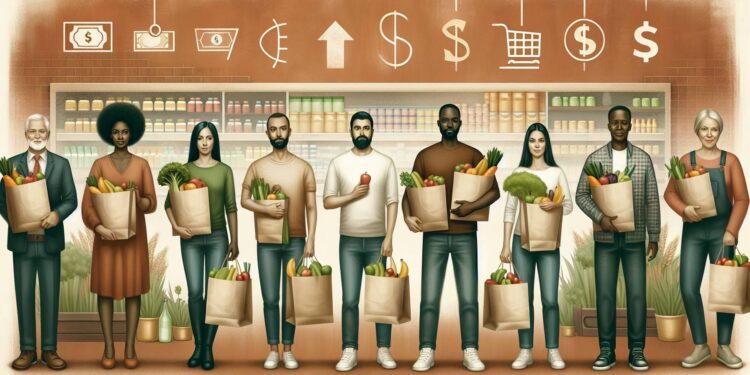The annual adjustment known as the cost of living adjustment (COLA) affects the Supplemental Nutrition Assistance Program (SNAP). This adjustment guarantees that allocations correspond with the increase in living expenses. On October 1, the USDA updates the maximum allocations for SNAP, along with the deductions and income eligibility criteria.
These modifications are influenced by changes in living costs. Approximately 5 million older adults benefit from both SNAP and retirement support, underlining the significance of these adjustments for a considerable segment of the community.
The legal parameters for income eligibility for SNAP are determined by the poverty threshold. For household size, monthly gross income limits are established at 130% of the poverty level, whereas net monthly income is set at 100% of the poverty threshold.
Each year, the USDA discloses the COLA along with new maximum allocations for SNAP benefits. Last year, the announcement of the 2024 COLA took place on August 3. This year’s update regarding the 2025 COLA increase is anticipated around the same timeframe.
Maximum allocations will see an increase across the 48 contiguous states and DC, as well as Alaska, Guam, and the U.S. Virgin Islands. For this year, the maximum allocation designated for a family of four in the 48 states and DC was $973, which is projected to rise for the approaching fiscal year.
The COLA process is grounded in comprehensive economic data, ensuring that adjustments accurately mirror the uptick in living costs. The USDA evaluates inflation statistics and consequently modifies maximum allocations, deductions, and income eligibility parameters.
As the 2025 COLA announcement draws near in the coming months, SNAP recipients can expect an increase in their benefits, which will aid in alleviating the impacts of inflation. It’s advisable for SNAP beneficiaries to stay informed of these adjustments via official USDA communications and local support agencies.
It is vital for beneficiaries to assess their benefits periodically and ensure their income and deductions are accurate. The cost of living adjustment significantly influences the benefits received under the Supplemental Nutrition Assistance Program.
Cost of living adjustment process
This adjustment allows beneficiaries to uphold their living standards amid rising costs. By working together, the USDA and other assistance programs ensure that these adjustments are precise and meet the authentic needs of the beneficiaries. A new benefit of $1,751 through the Supplemental Nutrition Assistance Program (SNAP) is set to be distributed shortly.
Millions of Electronic Benefits Transfer (EBT) cards will undergo reloading across the United States. SNAP benefits aim to assist low-income families in accessing healthier food choices. The program serves a wide array of individuals, including children, seniors, and those living with disabilities.
To be eligible for these benefits, the income and assets of a household must align with specific regulations. Gross monthly income must not exceed 130 percent of the federal poverty level, while net income must be at or below the federal poverty level post deductions.
Asset limits are set at $2,750 for households without an individual aged 60 or older, and at $4,250 for those with someone aged 60 or above. The amount of benefits is established based on household size and managed by the United States Department of Agriculture (USDA). In April, around 41 million Americans were recipients of SNAP benefits, accounting for 12.6% of the total population in the United States.
Payment schedules differ across states, with the complete SNAP payment timetable available via the USDA. For a general overview, upcoming payment timelines for various states are detailed in the article. Beneficiaries are encouraged to consult their state’s SNAP office or the USDA’s official site for precise information.
Recent updates indicate that certain states in the U.S. will soon distribute new SNAP Food Stamps payments to qualifying recipients. The timetable for SNAP Food Stamps benefits varies according to the beneficiary’s state. These payments may reach up to $291 per month.
For a thorough schedule outlining the dates for disbursing SNAP Food Stamps in August 2024, refer to the article. When states process the SNAP Food Stamps, funds will be deposited onto the recipient’s EBT card. Beneficiaries can then use these funds at participating locations for their purchases.
The SNAP Food Stamps program follows a distinct payment schedule that is state-dependent. Recipients must be aware of the specific disbursement dates in their state to plan accordingly.


